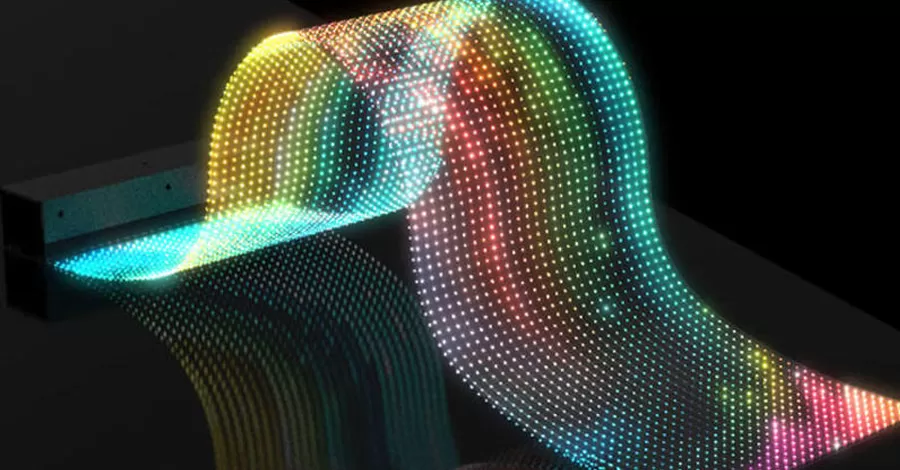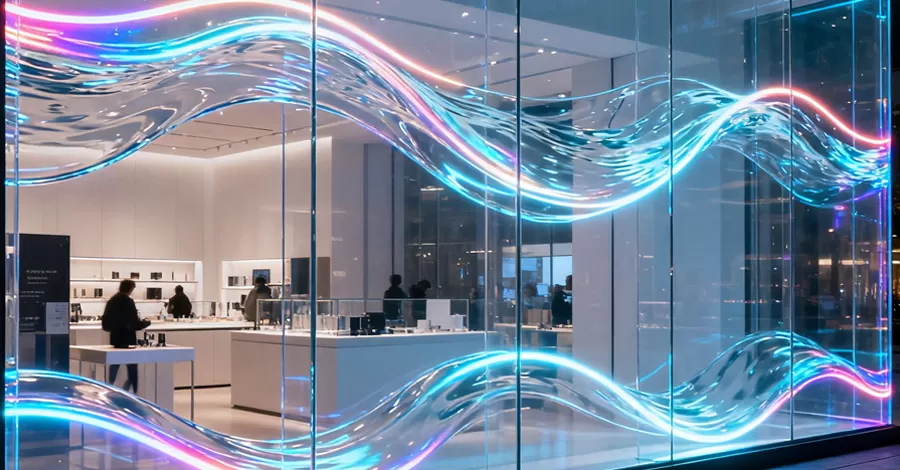Transparent LED film has rapidly gained popularity across a variety of industries due to its versatility and cutting-edge design. Whether you're looking to transform a retail storefront, create stunning advertising displays, or integrate digital content into architectural glass, this technology offers endless possibilities. But with multiple options available, including models like P6, P8, P10, P15, and P20, it can be tricky to decide which one suits your needs best. Let’s dive into the key features and applications of transparent LED film to help you make the right choice for your project.
What Is Transparent LED Film?
Transparent LED film is a thin, adhesive film equipped with LEDs that can be mounted directly onto glass or acrylic surfaces. The key advantage of transparent LED film is its ability to display vibrant digital content while maintaining high transparency, allowing light to pass through without obstructing the view behind it. When turned off, it’s practically invisible, making it perfect for glass walls, windows, and other transparent surfaces.
Key Features of Transparent LED Film
Here are the key features that make transparent LED film stand out:
1. High Transparency
One of the most striking features of transparent LED film is its high transparency, which allows it to blend seamlessly with the surrounding environment. Depending on the model, transparency can range from 90% to 95%. For example, models like P6 and P8 typically offer around 90% transparency, while P15 and P20 offer up to 94–95%. This makes it ideal for installations where you want the screen to remain unobtrusive when not in use.
2. Pixel Pitch & Resolution
Pixel pitch refers to the distance between two adjacent pixels, which directly impacts the resolution of the display. The smaller the pixel pitch, the higher the resolution and clarity of the images. For example:
- P6 (6mm pitch): Offers a fine resolution (~25,600 pixels/m²), making it perfect for close-range applications like retail stores and exhibitions.
- P8 (8mm pitch): Provides a good balance between resolution and transparency (~16,500 pixels/m²), ideal for medium-distance viewing.
- P10 (10mm pitch): Typically used for larger displays (~10,000 pixels/m²), suitable for mall facades and distant viewing.
- P15 (15mm) & P20 (20mm): Coarser resolution (~4,356 and ~2,500 pixels/m² respectively), ideal for large-scale outdoor signage and architectural facades.
3. Brightness
Transparency isn’t the only consideration—brightness is also critical, especially for installations in well-lit environments. Transparent LED films are designed to be extremely bright to ensure visibility even under direct sunlight. The brightness is typically measured in nits (cd/m²), and most models range between 2,000 and 4,000 nits, with some high-bright versions reaching up to 5,000 nits.
- P6: Usually around 2,500 nits; high-bright variants can reach 4,000 nits.
- P10: Can reach up to 4,500 nits, perfect for outdoor advertising.
4. Wide Viewing Angle
Transparent LED film provides a wide viewing angle, often up to 160° horizontally and vertically. This ensures that content remains clear and visible from various perspectives—ideal for retail spaces, malls, and public installations.
5. Thin and Lightweight Design
Transparent LED films are extremely thin (around 2.5mm) and lightweight (~3–5 kg/m²), making them easy to install on glass without adding bulk. Their light weight also allows for flexible mounting, including on curved surfaces.
6. Easy Installation
The film comes with an adhesive back for simple application on glass, minimizing structural work and setup time compared to traditional LED screens.
7. Energy Efficiency
LED technology ensures low energy consumption compared to traditional displays, helping reduce operational costs—especially for large-scale installations.
Comparison of P6, P8, P10, P15, and P20 Models
To understand how these key features differ across models, here’s a detailed comparison table:
| Model (Pixel Pitch) | Pixel Density (pixels/m²) | Transparency | Brightness (nits) | Viewing Angle | Weight | Thickness | Best For |
|---|---|---|---|---|---|---|---|
| P6 (6mm) | ~25,600 | ~90% | 2,500–4,000 | ~160° | ~3–5 kg/m² | ~2.5mm | High-res indoor displays: retail stores, exhibitions |
| P8 (8mm) | ~16,500 | ~92% | 2,000–4,000 | ~160° | ~3–5 kg/m² | ~2.5mm | Retail windows, malls, and curved glass displays |
| P10 (10mm) | ~10,000 | ~94% | 2,000–4,500 | ~160° | ~3–4 kg/m² | ~2.5mm | Large facades, public signage, outdoor environments |
| P15 (15mm) | ~4,356 | ~94% | 2,000–3,000 | ~160° | ~3–4 kg/m² | ~2.5mm | Big media installations, architectural glass walls |
| P20 (20mm) | ~2,500 | ~95% | ~2,400 | ~160° | ~3–4 kg/m² | ~2.5mm | Large-scale signage, building facades, stage backdrops |

Recommendations Based on Use Case
- Retail & Close-Range Viewing: Choose P6 or P8 for high resolution and sharp visuals ideal for close-up viewing.
- Large-Scale Public Signage & Building Facades: P10 or P15 work best for distant viewing and large-format ads.
- Maximum Transparency & Architectural Integrations: P15 and P20 are best when preserving natural views is the priority.
Conclusion
Transparent LED film is transforming the way we approach digital signage and architectural design. Its combination of high transparency, excellent brightness, and thin, lightweight installation makes it the go-to solution for innovative and impactful displays. By understanding the key features of different models—like P6, P8, P10, P15, and P20—you can make an informed decision that meets your project’s needs, whether it’s a high-resolution retail display or a massive outdoor advertising facade.



Associated Products
You may also be interested in the following products:
Self-Adhesive Transparent LED Display Film - P5
Transparent LED Film Display Screen - P6.25
Flexible LED Transparent Film Screen - P8
Ultra Transparent Film LED Screen - P10
Transparent Flexible Film Screen - P15
LED Crystal Film Screen - P20
P4 Transparent LED Screen Film